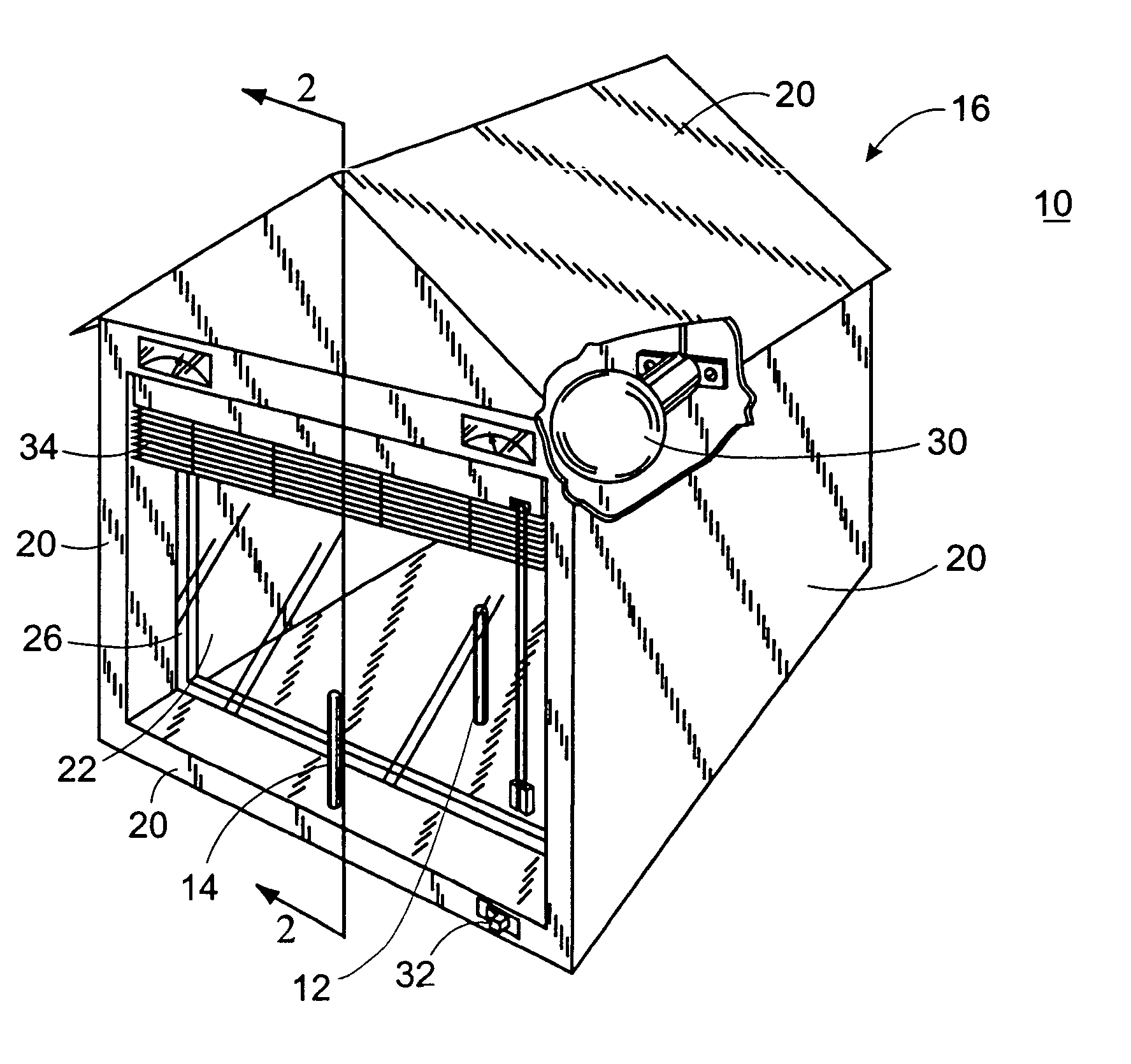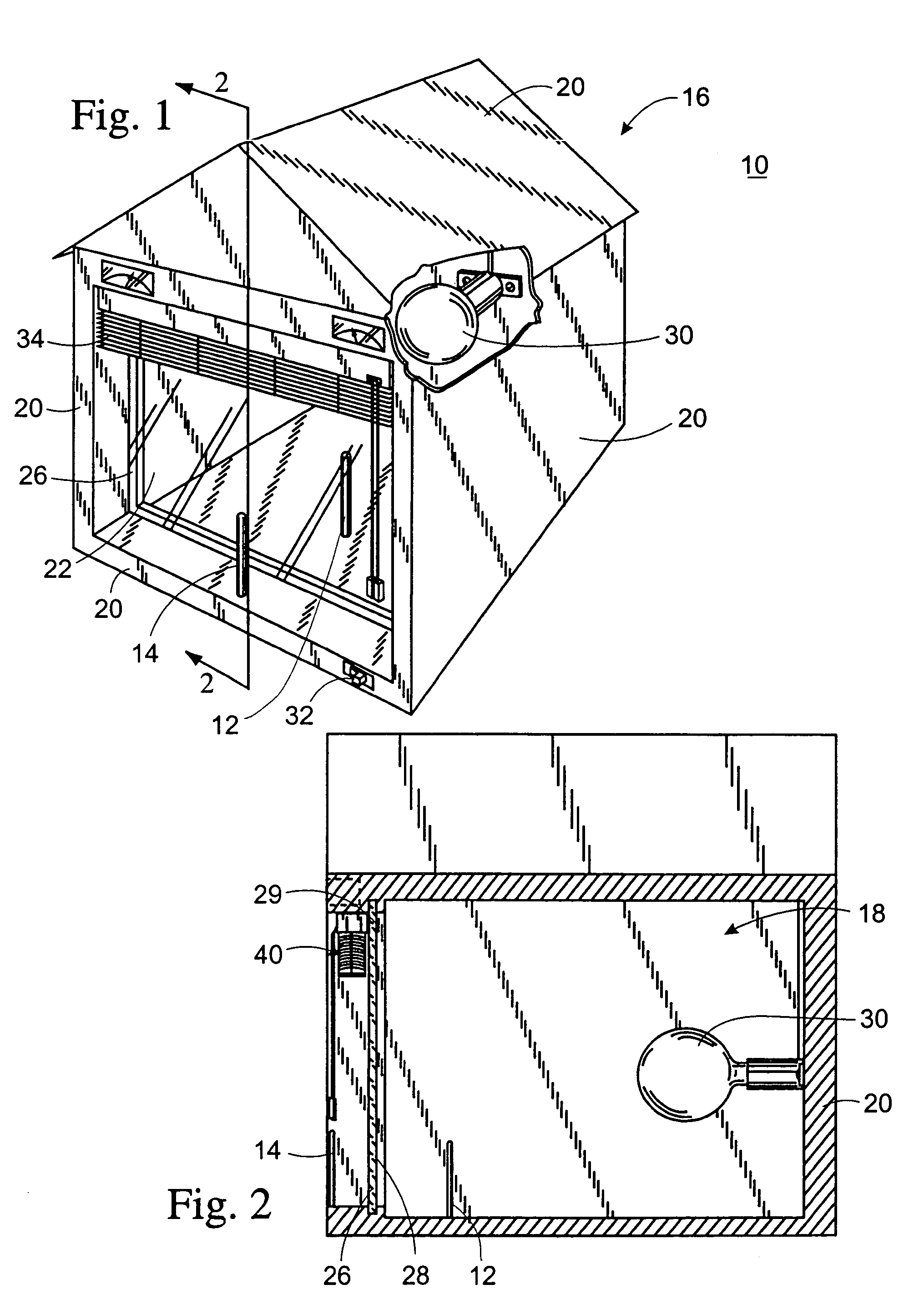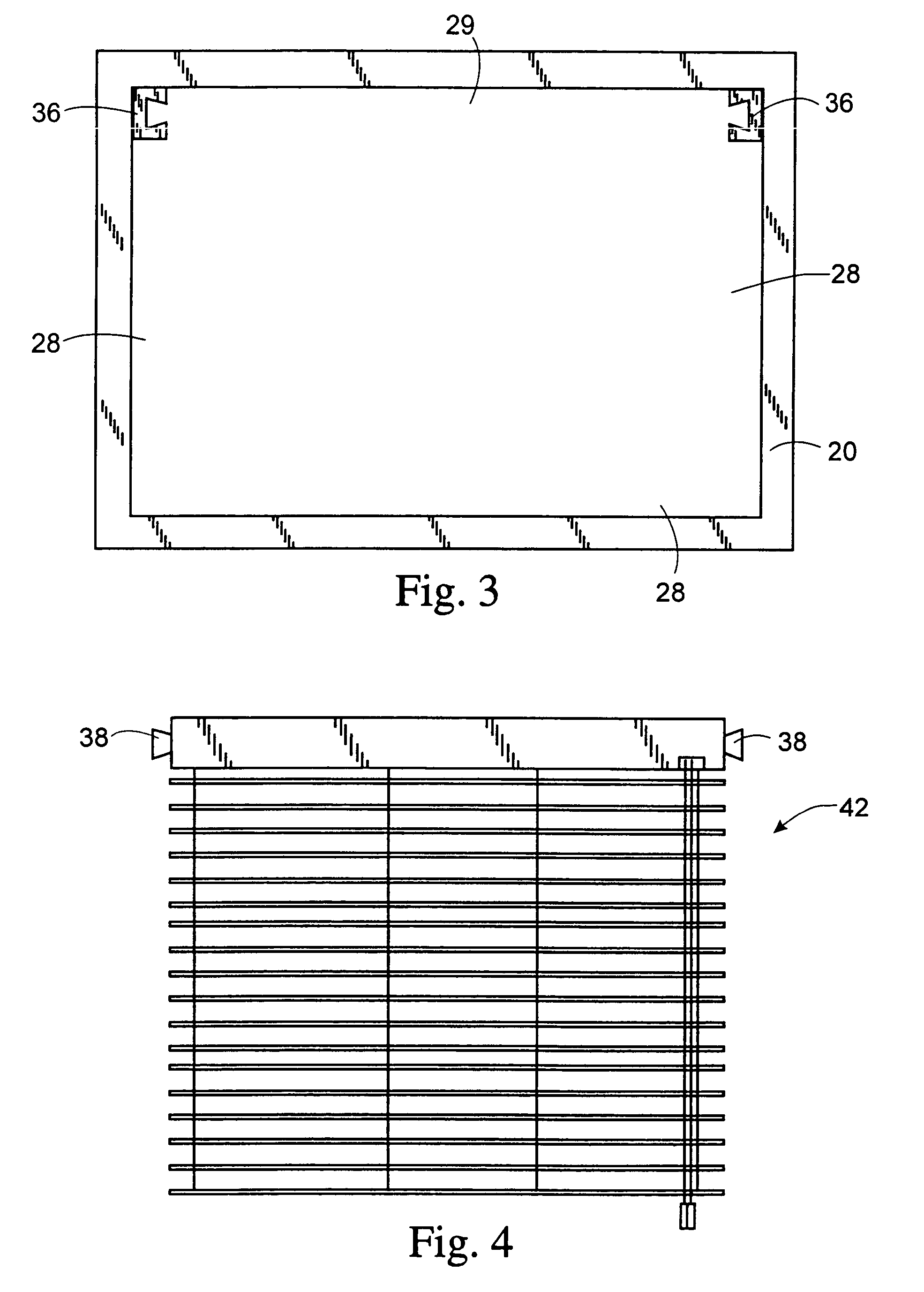Window covering display device
- Summary
- Abstract
- Description
- Claims
- Application Information
AI Technical Summary
Benefits of technology
Problems solved by technology
Method used
Image
Examples
Embodiment Construction
[0023]Referring now to the drawings wherein the showings are for purposes of illustrating preferred embodiments of the present invention only, and not for purposes of limiting the same. FIG. 1 perspectively illustrates a display device 10 constructed in accordance with a preferred embodiment of the present invention. As indicated above, the display device 10 enables a consumer to quickly observe and determine each window covering's heat insulation properties. Those of ordinary skill in the art will recognize that the display device 10 may be formed to have a variety of shapes, configurations, geometries, sizes and textures other than for that shown in the provided Figures.
[0024]Referring now to FIGS. 1 and 2, the display device 10 comprises a display housing 16. Although the display housing 16 is shaped in the form of a house, such depiction is exemplary in nature and should not be limited thereto. In particular, the display housing 16 defines an internal compartment 18. The interna...
PUM
 Login to View More
Login to View More Abstract
Description
Claims
Application Information
 Login to View More
Login to View More - R&D
- Intellectual Property
- Life Sciences
- Materials
- Tech Scout
- Unparalleled Data Quality
- Higher Quality Content
- 60% Fewer Hallucinations
Browse by: Latest US Patents, China's latest patents, Technical Efficacy Thesaurus, Application Domain, Technology Topic, Popular Technical Reports.
© 2025 PatSnap. All rights reserved.Legal|Privacy policy|Modern Slavery Act Transparency Statement|Sitemap|About US| Contact US: help@patsnap.com



